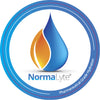POTS: 4 “Secret” Symptoms


It was a couple summers ago. After going in and out of doctors offices for years, I finally got the diagnosis I was awaiting. POTS, or Postural Orthostatic Tachycardia Syndrome. A form of dysautonomia, POTS can cause people to have issues with rapid heart rates that can mimic anxiety, hence not getting a diagnosis for years (surely I was just anxious, right? Wrong!).
At the suggestion of a friend, I joined some support groups on social media. Specifically, on Facebook which has a ton of communities (called groups) that can be a place for similar people across the world to come together on topics like soup making, geocaching, or you guess it chronic illness. The people in those groups are going through the same spoon sucking crap and hopefully can guide me through my ups and downs as I attempt to figure out how to find my normal again. And you know what? They helped! So much. But, I also found that I was learning things about my diagnosis that I would never have associated with POTS.
There are “secret” symptoms of POTS. Now, I say “secret”, but really they’re just not as commonly talked about. We all know that rapid heart rate is the most common symptom. Fatigue, headaches, and brain fog are also on the top of that list. But, there’s some we don’t talk about as much, and I’m here to reveal them! Here’s the 4 “secret” lesser known symptoms of POTS.
Gastrointestinal Issues
Nausea, vomiting, bloating. They’re really unpleasant, and, unfortunately, they can be a common part of living with POTS. In fact, in POTS patients abdominal pain and nausea are the most common symptoms outside of their cardiovascular symptoms. If you have Ehlers-Danlos Syndrome (or EDS) on top of POTS, you’re even more likely to experience this.
In general, large meals can also create problems for you. When you eat a large meal, blood is redirected to your stomach for digestion. This can lead to a temporary worsening of symptoms. Dysautonomia International recommends eating smaller meals throughout the day to combat this.
Some of the foods you’re eating may also contribute. We know that gluten intolerance (read: not necessarily Celiacs Disease) is a common problem many with dysautonomia experience. In a 2016 study, it was said that as many as 19% of people with POTS also have an intolerance to gluten.
Coat Hanger Pain
Imagine if someone hung you up by the shoulders and upper back in the closet like a common coat. That would stink. Coat hanger pain is just that. It affects the area between your shoulder blades and up towards your neck. The pain can worsen when you’re standing. Often misdiagnosed as fibromyalgia or spinal problems, it’s thought this particular pain is due to lack of blood flow to that area and can be common if you have POTS. In general, increasing your sodium intake with an oral rehydration salt, or medical grade electrolyte can help manage this symptom.
Keep in mind that there are a lot of reasons this type of pain can happen. It’s good to speak to your doctor if you’re experiencing symptoms of coat hanger pain so that you can seek treatment, if needed.

Flushing, or Rash
Your skin starts to get warm, and after checking the mirror you’ve discovered there’s a slow crawl of red spreading across your body. You’re flushed.
According to this 2015 study, as many as 77% of POTS patients report flushing or rashes as a symptom. Another study in 2021 suggests that 46% of people with POTS also have a condition called MCAS, or Mast Cell Activation Syndrome. Everyone has mast cells in their body, but with MCAS those cells are overactive. You can read more about mast cells in our blog about MCAS and POTS.
Adrenaline Surges
You’ve been relaxing, sitting in bed or on the couch watching a movie with your legs propped up. All of a sudden your heart rate just goes bonkers. That’s your fight or flight response kicking in. These adrenaline surges can come out of nowhere and leave you feeling as breathless as someone who just finished the Boston Marathon in record time.
Hyperadrenergic POTS is a form of POTS that is associated with elevated levels of the stress hormone norepinephrine. If you are one of these lucky people then you know first hand how debilitating the adrenaline surges can be. One minute you’re just relaxing and the next you can’t catch your breath. Hand in hand with those adrenaline surges are the adrenaline dumps. With adrenaline dumps your body is completely wiped out.








Thanks for sharing! Many in the POTS community—especially those with MCAS—struggle with additives, dyes, and sweeteners found in typical options like Gatorlyte. That’s why NormaLyte PURE is a popular choice—it’s made specifically for sensitive systems: no artificial sweeteners, no colors, no dyes, and no preservatives. It was created with POTS patients in mind.
If you’re looking for a clean, gentle electrolyte powder for POTS patients, NormaLyte PURE might be a great fit. For samples or trial info, feel free to reach out to customer service through the website. We hope it helps you find better hydration for POTS without the reactions!
Diagnosed POTS, and MCAS. Would love to try normalyte before purchasing. I’ve been on gatorlyte for my POTS but my body has decided to react to it for some odd reason I can only somewhat tolerate the blue ones.
That sounds like such a scary experience—I’m sorry you’re going through this. Getting a POTS diagnosis can be challenging, but a good first step is finding a doctor familiar with dysautonomia. Many people start with a cardiologist or neurologist, and a tilt table test or active stand test is often used to confirm POTS symptoms.
One place to look for a list of doctors would be on Dysautonomia International’s website. They have a directory of physicians worldwide that are familiar with dysautonomia and there may be one lose to you. Try here: https://www.dysautonomiainternational.org/page.php?ID=14
For those with a POTS diagnosis, focusing on hydration for POTS and electrolyte balance can help manage symptoms. Many in the POTS community find that a high-quality electrolyte powder for POTS patients, like NormaLyte, supports rehydration for POTS and helps with blood volume regulation.
Keep advocating for yourself, and I hope you get the answers you need soon!
I was taken
To hospital in a ambulance yesterday for a few symptoms,mainly seizures but also fat heart rate dropping quickly,the paramedic was convinced I had pots as I have every symptom and she was very concerned,how do I get a diagnosis?
Responding to Candy about doctors who treat ME/CFS near Murray, KY: I don’t know about doctors in your area but I can share my experience going to the ME/CFS Clinic at Stanford. They still don’t know how to treat it other than telling you to pace yourself & try to eat a Mediterranean diet and are just experimenting with different medications. First they gave me low dose Naltrexone (used to treat substance abuse at higher levels) but I was so wiped out on that, I spent 11.5 months in bed & it exacerbated another neurological issue I was having since I became ill. Then they gave me low dose anti-psychotic Abilify (I was told I was one of the first few patients they tried it on there). I was improved on that, but honestly, I believe it was getting off Naltrexone that made the improvement. I gained so much weight on the Abilify & had major heart palpitations & got scalp issues so I got off that after a year. Then they prescribed hydroxychloroquine (anti-malarial drug) & after a few months I got a bad rash head to toe, plus never noticed any benefit. They said they suspected I am a slow metabolizer & built up toxic levels. Then they tried anti-viral medication because they thought that might work (Acyclovir) & it did absolutely nothing but at least didn’t seem to have any side effects either. I was on that over a year. Then they said that anti-virals don’t work for ME so now they think anti-inflammatories might so they prescribed Celecoxib, but that caused horrendous heart palpitations, dizziness & breathing problems so I got off that. I don’t go there currently because I haven’t benefited & felt like a guinnea pig. The doctor that heads the clinic (not the one who heads the research) doesn’t listen & only wants to ask the same questionnaire that I already had to fill out between appointments & directly prior to my appointment. He refused to listen when I had information about improvements made via other practitioners with my sleep medicine treatment & nutritional deficiencies. He only wanted to get through his list of questions. His nurse practitioners and PAs are fine though.
I’ve had more improvement with supplements that an integrative medicine doctor suggested. She suggested ashwaganda (but that made me so dizzy so couldn’t take) & acetyl l-carnitine (which has helped me be more functional). I’m also taking lion’s mane supplement that helps brain function/brain fog & increases diversity of gut microbiome. I’ve had improvement of symptoms with fermented foods & I just cut out gluten because I read that a significant number of ME sufferers are thought to have gluten sensitivity & it has helped with anxiety, which I didn’t have before I got ill.
Something interesting, I have Ehlers Danlos Syndrome hypermobility type (EDS) & one of the practitioners at the ME Clinic told me that they have so many EDS patients there that she once saw 5 in a row. That is astonishing because it’s so difficult to get diagnosed with EDS at all because doctors are ignorant about it & think you must have circus side show hyper-extensible skin to have it, which is wrong, & that means that most people with it don’t get diagnosed. They say it’s incredibly rare but the EDS societies all say it’s not rare, just rarely diagnosed. The average person takes 16 years to get diagnosed but most never get diagnosed. So that’s shocking that they have so many. Even after I got diagnosed by a world renowned doctor, other doctors (a dermatologist, orthopedic specialist, & cardiologist) have argued that I can’t have it because my skin (which the dermatologist raved was so youthful… because people with EDS are known for velvety skin) isn’t severely hyper-extensible, only mildly. EDS is a connective tissue disorder that affects all the tissues in your entire body, making them porous & fragile & manifesting in a wide range of body wide health issues that are to varying degrees for every individual. Also, the clinic always asks if I have diarrhea because the bulk of their patients seem to & GI issues & nutritional deficiencies are common to EDS. Also, when I got referred to the ME clinic, I thought it was absurd because all of the symptoms of ME are associated with EDS, but they insist I have it.
The one practitioner at the ME clinic said they were looking into starting an EDS clinic because of the prevalence at the ME clinic or at minimum develop a screening protocol for EDS of all of their patients, but that hasn’t happened. Stanford said they don’t diagnose or treat EDS when my GP was initially trying to refer me to Stanford rheumatology. A pediatric cardiology specialist at UCSF was also trying to start an EDS clinic because of the many health issues it causes but he retired before it was realized. There is a connective tissue disorders clinic (Tulane EDS clinic) that made the discovery that people with connective tissue disorders have the MTHFR gene mutation & makes it so they can’t methylate folate, which means that they aren’t getting enough folate in their tissues but they have a toxic overload of it in their blood. Folate has been added to wheat flour for years now, so I wonder if it’s the folate & not the gluten that’s the problem. Anyway, the solution is to take methylated supplements.
So from everything I’ve read, I’m focusing on improving my gut microbiome and sleep management, addressing nutritional deficiencies, and limiting sugar, plus avoiding wheat.
Candy, I’m sorry that I can’t help with any doctors in your area, but hoping that sharing the treatments that I’ve had, it might be something you can discuss with your practitioners and to let you know that even a clinic that specializes in ME at a prestigious institution doesn’t seem to have a clue about treating it because there still is no known cure, only symptom management. Wishing you better days ahead.
Leave a comment